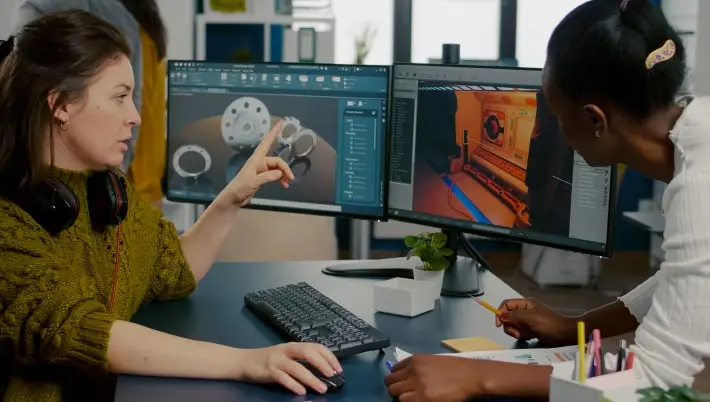For many casino gamers, playing at the online casino involves combining old favorites with new gaming events. It's always comforting to find the games that you know and enjoy, but it's also fun to know that you can embark on new online slots real money gaming adventures with a constant flow of new releases that appear in the games' lobby on a regular basis.
Game designers work hard to keep the casino supplied with new content. But designing new games isn't a simple process. The designer needs to understand what types of themes and storylines will appeal to the majority of gamers, what types of features will draw the players, and how to incorporate bonus rounds that keep the action moving.
Grande Vegas invites you to an overview of how casino games are created.
Creating a New Game
Creating a new casino game involves a structured process that includes brainstorming, design, development, and testing by multidisciplinary teams. Throughout the process, the design team must consider relevant regulatory standards and market trends.
The process begins with research and brainstorming with the goal of defining a unique idea or gameplay style. The target audiences must be considered, as well as current trends and competitive analysis.
Ideas
The first and most important action in this preliminary step involves developing the idea for the new game. Designers get new ideas for new games from multiple sources, including visual trends, pop culture, player feedback, competitor research, analytics on other games in the casino's library and innovations in technology.
Games that evolve from pop culture and entertainment are well-received because they deliver familiar and engaging experiences for players. Platforms like Dribble and Behance give designers ideas of new artistic styles, animations and interactive elements that can be adapted for casino games.
Reviewing player reviews, behavioral data, and feedback helps designers discover what excites or bores audiences, which can inform new gameplay mechanics or feature innovations. Designers also investigate the success of games from competitors to determine which themes, mechanics and reward systems are effective. They can then take these elements and adapt or improve them.
Advancements in technology, including AR and VR, blockchain, and advanced Random Number Generators, inspire creators to invent features and user experience. Some of these features were impossible just a few years ago, but today they can be easily added to allow for an enhanced gaming event.
Design and Planning
Next, design teams determine the visual style that the game will display, basic game mechanics (i.e. rules, pay lines, RTP rates), and user experience. Artists and designers create visuals while sound specialists produce audio elements that align with the theme.
Development
Developers use engines like Unity or Unreal to code the game logic, integrate random number generators (RNGs), and embed unique features like bonuses or social interaction.
Testing and Refinement
Before a new game is launched, it must undergo the developer's quality assurance testing to ensure that it complies with all relevant regulations. The game is tested on audiences around the world and the developers use feedback from these testing sessions to refine the gameplay, balance, and performance.
RTP and Volatility
How is return-to-player and volatility decided during design?
Many players decide whether they want to play a game based on the game's Return to Player percentage and the volatility rate. Game developers use statistical modeling, which combines with intended player experiences, payout structures, and regulatory requirements when deciding on the game's volatility and RTP percentages.
RTP is set by configuring the pay tables, the payout ratios, and the probabilities of winning combinations in a way that ensures that, over a vast number of plays, a certain percentage of wagered money will be returned to players. Mathematical models and simulations ensure the game's outcomes average to the desired RTP rate (generally from 93% - 97% -- 96%+ is considered high).
Adjustments are made to the frequency of wins and the value of each win in the game’s code and random number generator algorithms, allowing for precise calibration to reach the target RTP.
Volatility
Volatility – also called "variance" reflects the size and frequency of payouts. While low volatility games offer frequent, small wins, high volatility games deliver larger, though less-frequent, wins.
To set a game's volatility, designers model and select symbol distributions, feature triggers, and bonus frequency to achieve the desired "risk profile" – including how often jackpots and big bonus payouts appear versus small wins. Developers use statistical analysis and simulation tools to predict how variations in the pay table and bonus design will affect volatility and player experience.
Future Developments
AI is transforming the way that designers develop new casino games with deep personalization, optimization of game balance, and new dynamic data-driven game mechanics.
AI tools streamline testing and simulate player behavior, which makes the development process more efficient and effective. AI can automatically assess game balance, fairness (RTP and volatility), and can identify glitches. All of this frees designers so that they can focus on creativity.
Casino players can look forward to more efficient, more personalized, and more innovative gaming adventures that combine responsible gambling with rich, engaging, and adaptive gaming experiences.

